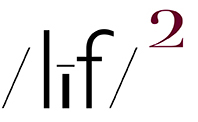“The photographs that excite me are photographs that say something in a new manner; not for the sake of being different, but ones that are different because the individual is different and the individual expresses himself. I realize that we all do express ourselves, but those who express that which is always being done are those whose thinking is almost in every way in accord with everyone else. Expression on this basis has become dull to those who wish to think for themselves.” - Harry Callahan
I BELIEVE IT TO BE TRUE THAT A LARGE PORTION OF the population feels quite safe and reasonably happy being in accord in almost every way with everyone else. Hell, even in our politically divided US of A, 75% of the population did not vote for t-RUMP,––who gave us E. musk-RAT as a bonus. However, that written, this is not about politics, it is about photography…
…. and I also believe it to be true that most “serious” amateur picture makers are reasonably happy making pictures, aka: expressing themselves, that look remarkably like the pictures everyone else is making. Ya know what I mean; safe, conventionally ”approved” subject matter pictured according to the “rules”, or if you prefer, creating one cliché after another. Whether this is due to the fact that most “serious” picture makers are risk-adverse or––as I believe––are unable to imagine themselves out of a wet paper bag is an open question. Although, iMo, it is most likely a combination of both causes….
ASIDE All of that written, it is worth asking what, contextually, was Harry Callahan referring to when using the phrase “expresses himself”? iMO, it would be reasonable (and safe) to assume that he was referring to the act of making photographs. And, it would also be reasonable to assume that with his idea, “Expression on this basis (thinking in accord with everyone else, picture making wise) has become dull”, Callahan is expressing––in the kindest possible manner––his dislike of boring, photographic schlock. END ASIDE
…. , but, my ASIDE aside, maybe the “cause” of all of this dull expression is not attributable to group thinking. Rather, it finds its roots in the fact current research suggests that:
Our findings indicate that the creative brain is “wired” differently and that creative people are better able to engage brain systems that don’t typically work together. Interestingly, the results are consistent with recent fMRI studies of professional artists, including jazz musicians improvising melodies, poets writing new lines of poetry and visual artists sketching ideas for a book cover.
Future research is needed to determine whether these networks are malleable or relatively fixed. For example, does taking drawing classes lead to greater connectivity within these brain networks? Is it possible to boost general creative thinking ability by modifying network connections?
For now, these questions remain unanswered.
So, going with my unable-to-imagine-their-way-out-of-a-wet-paper-bag idea, it is quite possible that this issue, attributed to those alike-thinking picture makers, is actually linked to the fact that they are not able to engage brain systems that don’t typically work together. Not cuz they are dumbasses but rather cuz they were born / wired that way. Sorta like they got passed over in that ability in the DNA / genetics spin-of-the-wheel, aka: “god-given gift”, lotto.
Now I am aware that mentioning the above research––just one of many that have come to similar conclusions––reads like the ye-olde either-ya-got-it-or-ya-don’t saying. Some might be inclined to put me on an express train to being an “elitist” but here’s the thing; I have indeed been a life-long believer in that ye-olde saying.
However, that is not to write that I believe it to be an all-or-nothing concept. Rather, I believe that “having it” runs along a spectrum; some have it to the max, some have a healthy dose, while others have enough of it to be dangerous, and some just don’t have it at all. And, to be certain, just cuz one has-it in one area of human endeavor does not mean they have it any other area of human activity.
So, if ya got it, use it. If ya don’t you can always play it by the “rules”.
